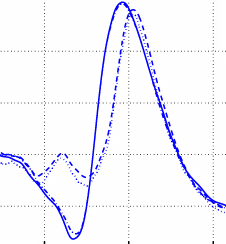The Body Heals By Secondary Actions
When we apply a hot pack, the heat is transferred to the body and causes the vessels to dilate and increases blood flow. The vasodilation and increased blood flow then cause a secondary effect—one of cooling—as the blood dissipates the heat. Similarly, when we apply a cold pack, the cold contracts the vessels, lowering body temperature. The body reacts with a secondary reaction by sending more blood to the area to warm up the tissue.
In physics, every action has an equal and opposite reaction (third law of thermodynamics). Heat results in cooling; cold induces warmth. In medicine, a small amount of a substance tends to have a tonifying effect; whereas a large amount of a substance tends to have a toxic effect (hormesis).
Homeopathic medicines are made from many sources—plants, animals, minerals, even from pathogenic factors—but are diluted sequentially so that above a 12c prescription, there is not one molecule of the substance remains, but the energetic signature of the substance is imprinted in the water/alcohol mixture or onto lactose pellets.
A homeopathic prescription strives to match the patient’s totality of symptoms, but not exactly. It is as close to the symptom profile as possible (similibum) without being exactly the same (isopathy).
 Graphical representation of Similibum
Graphical representation of Similibum
When a homeopathic remedy is given to a healthy person—as when Hahnemann experimented with Cinchona—a certain set of symptoms is observed. These symptoms are the primary effects of the remedy.
A person who is ill already has the primary symptoms; the vital force is stuck, unable to return to health. When a similibum is given, the primary effects of the remedy press on the body and the vital force pushes back. In order to throw off the similibum, the vital force becomes successful in throwing off the disease.
Because of the stimulating actions of the secondary effects, a well-chosen homeopathic remedy can act deeply and in many cases results in resolution of symptoms. On the other hand, Western medications, due to the reliance on primary effects, tend to require repeated doses in order to manage symptoms.